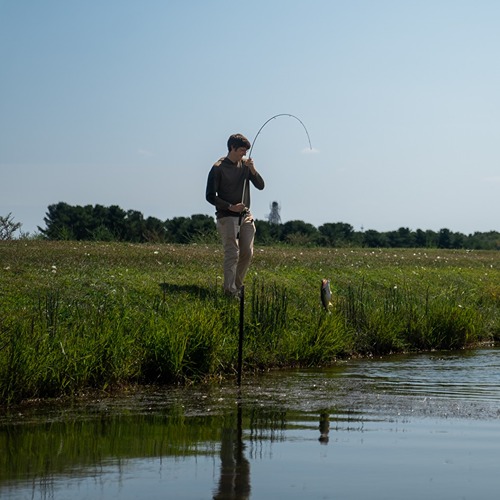Study: Rural-urban fiscal divide grows in response to decades of state tax overhauls
In the early 2000s, Indiana started making significant changes to its local revenue policies — altering the way counties assess property value, capping property taxes, adding new local income tax options, and modifying school and road funding formulas. The changes have made providing basic local governmental services easier in rural counties, while putting more fiscal pressure on urban areas, according to a Purdue University economist’s report.
Larry DeBoer, a professor of agricultural economics, calculated each Indiana county’s capacity cost index, which considers the county’s particular tax base and potential state funding as well as its costs, including city and town population, school-age population, roads that must be maintained, and other basic needs. A positive index figure suggests that a county can provide those basic services with a lower tax rate. A negative index means counties must adopt higher tax rates to do so and may have trouble even then.
The report, “Capacity-Cost Indexes for Indiana Local Governments 2002 and 2018,” prepared for the Indiana Fiscal Policy Institute, compares these indices across the state for 2002 and 2018. During that period, as tax codes changed, urban and rural areas diverged, with the urban negative ratings growing while rural areas became more positive.
The key differences, DeBoer said, are farmland values and changes in population levels. While urban areas and larger towns add population, they don’t increase their property tax bases at a proportional level. Farmland makes up the majority of taxable property in rural areas. Farmland assessments increased substantially after 2002, and are not affected when rural populations decline.
That’s a double-edged sword, however. Rising farmland values improve a rural county’s ability to fund its basic services, but they also mean that more tax burden is placed on the shoulders of farmers as their county population declines.
“Populations have been falling in many rural communities, but some baseline services don’t change with population. You still have to maintain roads, operate school buildings and pay for emergency services,” DeBoer said. “Costs per person go up when rural populations fall, but the farmland remains to be taxed, and we increased farmland assessments a lot in the past 20 years. But as those people move to cities and urban areas, they increase costs in those places without doing as much for expanding the tax base. That can make meeting basic needs more difficult.”
The introduction of large standard and supplemental homestead deductions further held back urban tax revenue growth. In those counties, new homes add to the tax base, but the homestead deductions limit the value for tax purposes.
“Places with faster growing populations experienced a drag on capacity growth from increasing homestead deductions,” according to the report.
Other finding included:
- Counties that lose manufacturing jobs without replacing them in other areas had slow revenue capacity growth. Loss of population in those areas did not lead to proportional cost declines.
- Growing urban areas with rising costs saw higher property tax rates. Higher rates triggered higher tax cap credits, which lowered the tax bills of residents and further eroded local revenues.
- Rural counties experiencing population loss did not see costs drop proportionally. Some costs, such as those for roads, increased per capita. But farmland values pushed revenue capacity higher than costs. The state’s maximum tax levy limits required counties to reduce property tax rates, rather than increase spending.
The report was developed prior to the COVID-19 pandemic and the ensuing economic setbacks, and DeBoer said those issues will further reduce revenue capacity across the state. He projects declines in property values, lower taxable incomes and potential cuts to state school aid will make it more difficult for urban areas to cover service costs.
“The COVID-19 recession will reduce the capacity of local governments in every Indiana county,” DeBoer wrote. “Those that are already struggling to deliver services with limited tax bases will be affected most harshly.”





